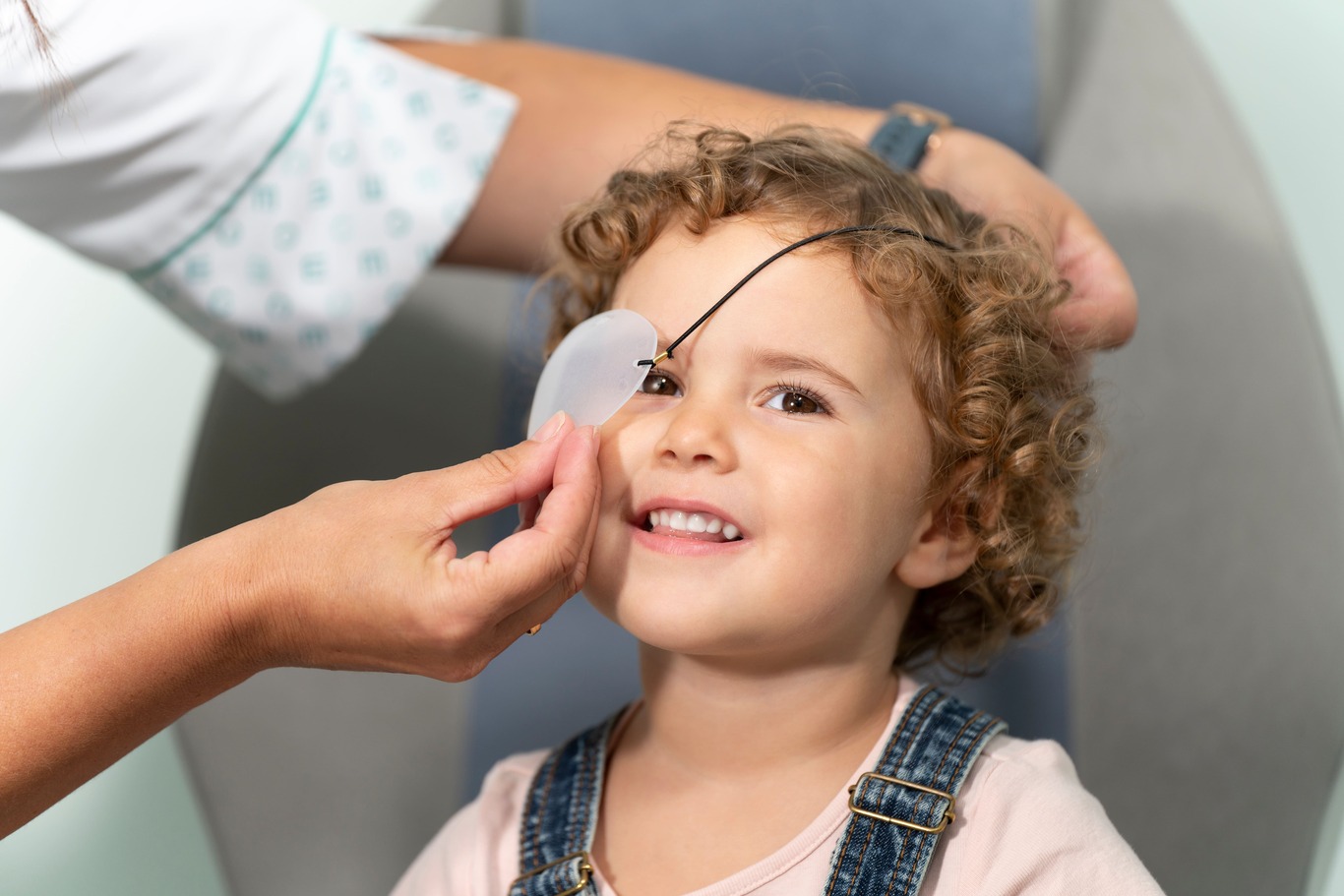Vision Screening Tests for Toddlers
In early childhood, children undergo screening tests for early detection of vision disorders and to assess risk factors for a lazy eye (amblyopia). The combination of the multiple tests increases the chances of detecting vision disorders early.
The goal of screening tests is to identify children who may not exhibit symptoms but still have a vision disorder.
It is important to point out that if your child reports eye problems, such as rubbing or blinking their eyes frequently, and you are concerned about their vision, you should seek a referral to a pediatric ophthalmologist for a vision test instead of waiting for the screening test.
Vision development
The sense of sight is essential for the functioning of children, and it also influences their learning skills. Children are born with a sense of sight, and it continues to develop until the age of ten. A lack of proper signal transmission from the eye may affect the development of parts of the brain that are involved in vision.
-
The cornea: which is the transparent area at the front of the eye
-
The pupil: which can constrict and dilate to control the amount of light that enters
-
The lens: which focuses the light that passes to the retina
-
The transparent liquid filling the eye (the vitreous humor)
-
The retina: this is where the optic nerve is located and transmits signals to the brain
The causes of visual impairments
- Cloudy cornea due to cataract.
- Eyelid drooping (ptosis), a condition where the eyelid does not open completely and covers part of the eye.
- Strabismus is a condition in which the eye axes are not parallel or aligned, leading to differences in light rays entering the eyes.
- Amblyopia is a large difference in visual acuity between the two eyes.
The differences between the eyes may cause the brain to receive signals only from one eye and ignore the signals from the other eye.
The significance of early detection of ‘lazy eye’ (amblyopia)
Early detection of a lazy eye in young children, in the years in which the brain still develops, is essential to decreasing the risk of vision impairment. The earlier you detect risk factors, the chances of success of the treatment will be greater. Without a treatment, the condition might lead to irreversible blindness in one eye.
| Test | Conducted by | Place | Age |
|---|---|---|---|
| Red reflex test | Pediatrician | Hospital | After birth |
| Questioning | Tipat Halav nurse | Tipat Halav | During Tipat Halav appointment |
| Red reflex test | Tipat Halav physician | Tipat Halav | Two months, nine months and eighteen months |
| Corneal reflex | Tipat Halav physician | Tipat Halav | Two months, nine months and eighteen months |
| Physical examination | Tipat Halav staff | Tipat Halav | During each Tipat Halav appointment |
| Development examination | Tipat Halav nurse | Tipat Halav | 6 weeks, 4 months |
| Photo screening | Testers | Kindergartens | Preschool |
| Acuity test | Tipat Halav nurse | Tipat Halav | 4 years |
| Acuity test | Student health clinic | School | 1st grade |
| Acuity test | Student health clinic | School | 8th grade |
It is important to keep in mind
It is important to keep in mind
If your child has not undergone one of the screening tests, it is recommended to consult promptly with a pediatric ophthalmologist for a comprehensive eye examination.







